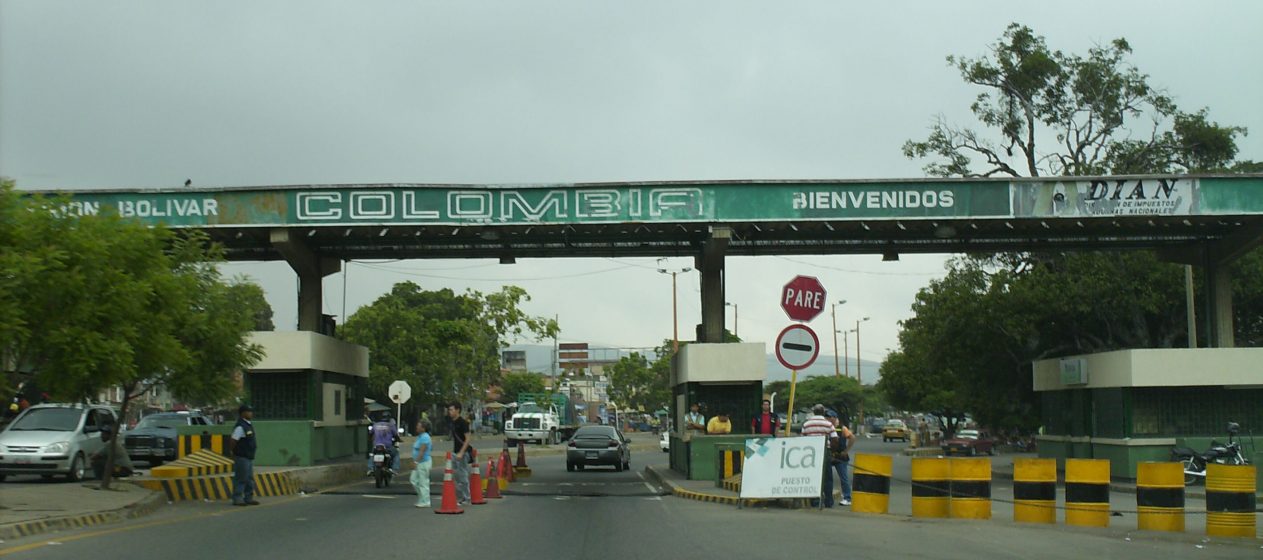As Venezuela’s crisis continues, so too do its serious repercussions for neighbouring countries. Of the four million Venezuelans that have left the country – the largest migrant crisis in the region’s recent history – more than 1.3 million have arrived in Colombia, on Venezuela’s western border. But this comes at a time when Colombia itself still faces high levels of violence.
Though its government signed a peace deal with the FARC guerrilla group in 2016, their counterparts in the National Liberation Army (ELN) have yet to give up arms. Elsewhere, the number of FARC dissidents is rising, and other violent non-state groups – from right-wing paramilitaries to Mexican drug cartels – are jostling for position in the race to fill the void created by demobilisation of the FARC.
While most commentators have focused on the humanitarian aspects of the crisis in Venezuela’s border regions, a parallel security crisis is also penetrating these areas.
At the Colombia-Venezuela border, this security crisis is reinforced by what I call the “border effect”. This effect arises from the confluence of weak state-governance systems, a low risk-high opportunity environment that creates incentives to work in the illicit economy, and a tendency towards impunity due to a lack of cross-border judicial and security cooperation.
As I explain in my new book “Borderland Battles“, this effect intensifies insecurities while also rendering them less visible outside of these regions. Four main dynamics drive this trend:
- facilitation of violence
- undermining of trust relationships
- attraction of multiple violent non-state groups
- disguising of nuanced security dynamics
Vulnerable frontier regions in remote areas of the Andes and beyond have always suffered from the border effect, but the Venezuelan situation adds a new and unprecedented pressure that intensifies this effect ever further.
The border as a facilitator of violence
The border is a facilitator of non-state armed activities: while violent non-state actors can easily cross it to evade prosecution at home or to carry out cross-border attacks, law enforcement agents are limited by the borderline, especially when security cooperation across the border is deficient. In parts of Venezuela, this has allowed armed non-state groups to assume effective control.
It is an open secret that Colombian guerrillas have been using Venezuela as a safe haven and an operating base for decades, but this practice is now becoming more entrenched. The still mobilised ELN is believed to be active in 12 Venezuelan states. FARC dissidents are gaining a firm grip on lucrative gold-mining operations in southern Venezuela. And former Colombian paramilitary groups operate across Venezuela’s border regions.
There is also an expansion of smaller criminal groups, as in the corridor between Venezuelan Maracaibo and Colombian Maicao on the region’s Guajira Peninsula. Here, difficulties in tracking perpetrators across borders make it difficult to bring them to justice, which feeds into a climate of impunity.
The border as a deterrent to trust relationships
The border also impedes trust relationships between actors engaged in illicit cross-border activities. This in turn fuels distrust towards local communities who depend on these activities (e.g. gasoline smuggling), which can then create a general environment of mistrust towards outsiders.
Most of the Venezuelans that have left their country stay in the neighbouring countries where they arrive, and many cannot afford to go any further than the border region. These Venezuelans are often “absorbed” by local communities rather than being “packed” into refugee camps. This puts pressure on local governance systems that already struggle to cater for their own populations.
The increased pressure on basic services, access to food, and job opportunities has had significant impacts. As our research at Oxford University’s CONPEACE programme has shown, crime, prostitution, and begging have all increased in Venezuela’s border areas – a region already plagued by soaring criminal violence and the world’s highest homicide rates.
The social tensions arising in such situations are obvious. Where previously encounters with strangers from across the border were characterised by mistrust only if they occurred in “narco-prone” locations, today open expressions of xenophobia have become commonplace. Venezuelans who arrive without any material or financial means are at particular risk of being scapegoated for all manner of security problems.
The border as a magnet for violent non-state groups
Border regions with deficient state presence and weak cross-border regulatory mechanisms also attract those involved in illicit businesses due to the significant profits on offer. Given their geostrategic location as key corridors for cocaine and related trafficking, the Colombian-Venezuelan borderlands have for decades exerted this kind of gravitational pull on criminal actors involved in the cocaine trade and other forms of organised crime.
The ongoing crisis in Venezuela makes this situation even more acute. In Colombia, the cultivation of coca, required to produce cocaine, has increased, including in the Norte de Santander region bordering Venezuela. As a civil society leader from the region told our research team some months ago, workers arriving from Venezuela often move into the coca-growing industry. The money they make as coca farmers significantly exceeds Venezuelan salaries, and coca growing may represent their only potential source of income.
The availability of this reserve pool of labour allows armed actors such as the dissident FARC Front 33 to keep its illicit drug business going, even if in some regions the government’s coca reduction programmes have finally kicked in.
Yet Venezuela serves as a hub of multiple interlinked illicit flows, not only of drugs. Venezuelan women and children are being trafficked across Venezuela’s borders on the same routes used for drug trafficking and gasoline smuggling.
What is more, interviewees from Venezuela’s south-western state of Táchira report that it has become more common to hear Mexican accents in Venezuelan “narco-hubs.” This speaks to the stealthy yet steady expansion of the Mexican drug cartels, which are occupying ever more links in illicit supply chains amidst increasing competition for the region’s narco-business.
The border as a disguise of nuanced insecurities
While the first three aspects of the border effect intensify security challenges, there is one final aspect that explains the general disregard for these dynamics amongst national publics and the wider international community: borderlands tend to be seen as generally dangerous places, regardless of the nuances of the distinct insecurities that arise in different subregions.
This generalised image of borders as violent spaces also disguises the alarming ways in which the Venezuelan crisis is fuelling political violence in Colombia. While much of the “messiness” along and across the Colombia-Venezuela border is considered a side-effect of the humanitarian crisis in a remote space, much of the insecurity is in fact the direct outcome of an armed conflict in Colombia that has been revived to some extent by the Venezuelan crisis.
Bodies of Venezuelan nationals killed in combat between state forces and guerrillas, as well as the accounts of local community members, bear gruesome testament to the fact that young Venezuelans in search of a better future have often become easy (or forced) recruits for the ELN, FARC dissidents, the Popular Liberation Army (EPL), and other violent non-state groups emerging from Colombia. This not only increases pressure on the Colombian government but also fuels armed clashes among these groups. Just this kind of process has helped to turn Colombia’s Catatumbo region, which borders the Venezuelan state of Zulia, into a powder keg.
The future of the Colombia-Venezuela border
As was reiterated during a recent UN Security Council visit, Colombia still has a long way to go on its own road towards sustainable peace. At the same time, a plea from the United Nations High Commissioner for Refugeesto assist the millions of Venezuelans fleeing their country remains a matter of urgency.
Adopting a borderland lens that starts from national peripheries shows that these developments and the respective Colombian and Venezuelan responses to them cannot be considered in isolation. Security challenges exacerbated by the border effect are becoming even more acute in the context of the Venezuelan crisis, and failing to tackle these issues now could have serious, destabilising, and long-term implications. The worst case scenario could even see Colombia’s peace deal destroyed amidst soaring violent crime.
Nor is the Venezuelan crisis likely to end in the near future. Even if there is a peaceful transition in Venezuela and flows of migrants begin to reduce, those that have already fled will find few easy options for return.
For Colombia and Venezuela alike, investing in long-term plans for sustainable peace and security across and along the border will be essential.
This article was originally posted on the LSE Latin America and Caribbean blog.




